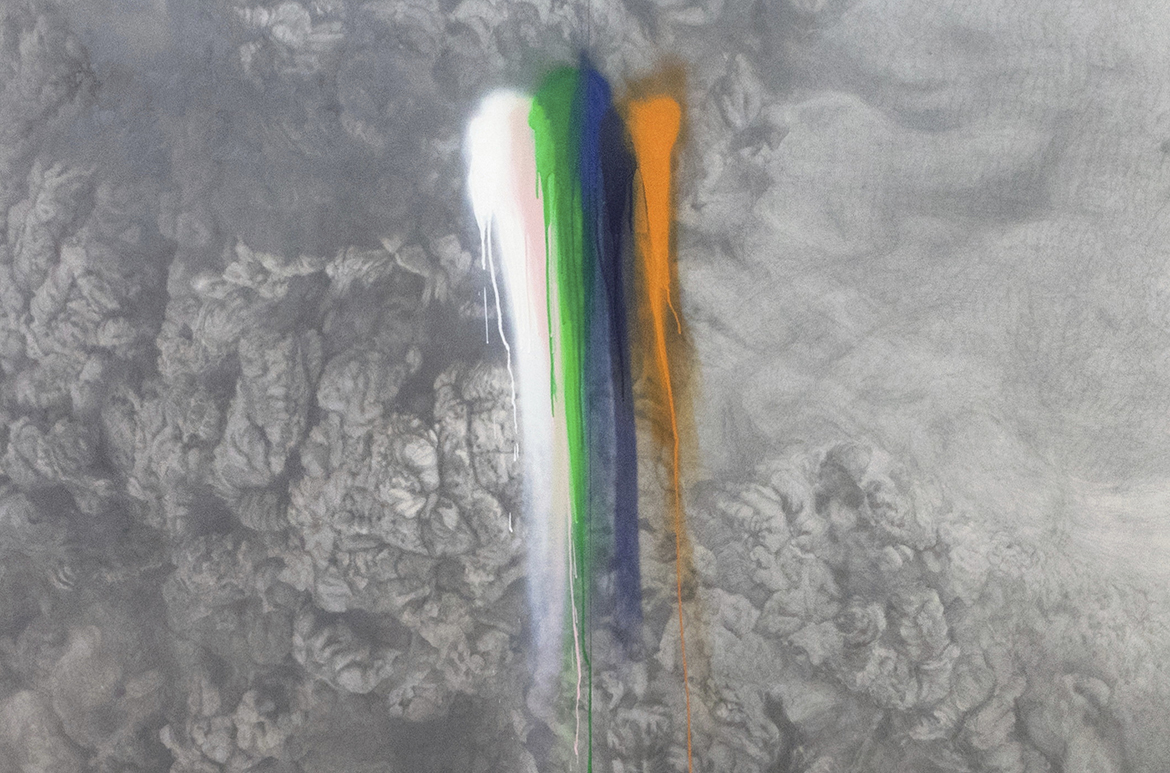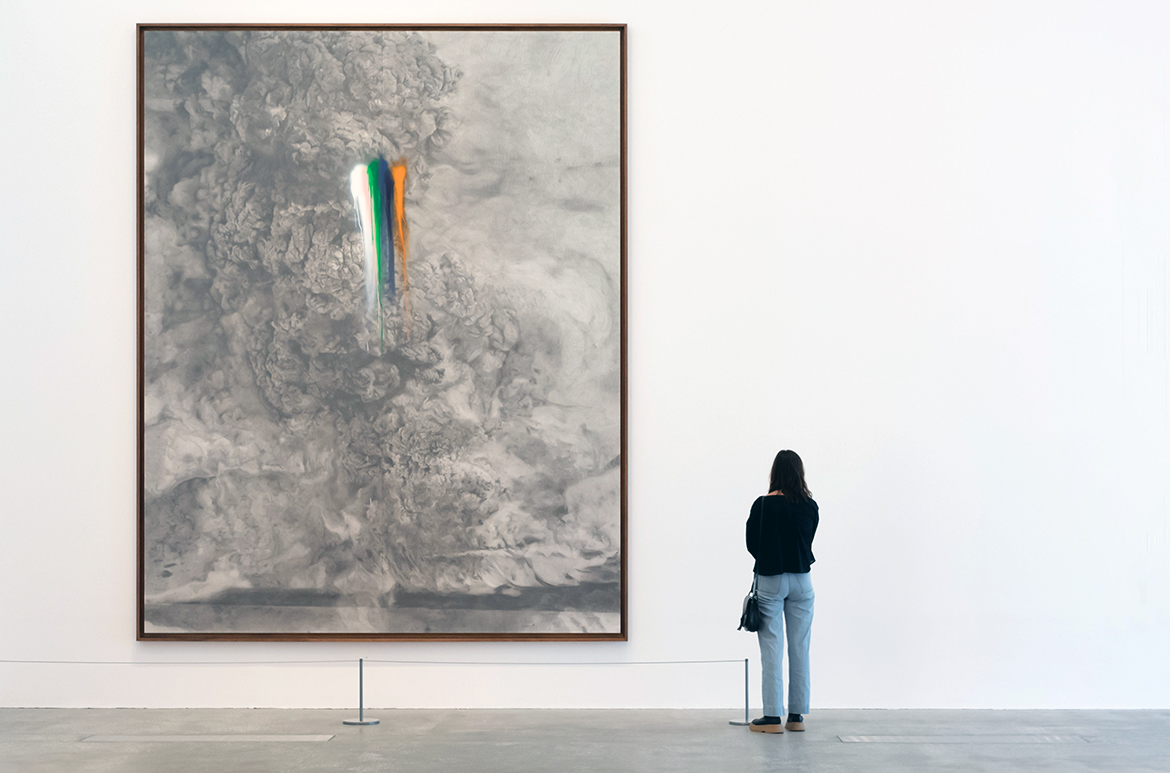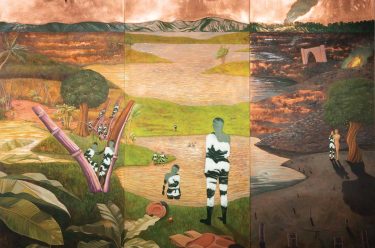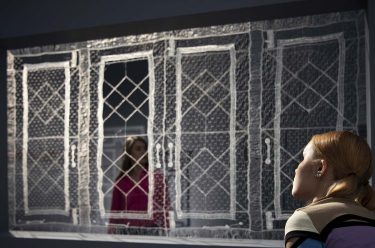The vast plume carefully drawn in Rainbow Herbicides 2018 (illustrated) by Thu Van Tran compiles details of volcanic eruptions, man-made explosions and photographs of clouds taken by the artist herself. The air here is thick and dangerous and marked with six lines of brightly coloured spray paint, reminiscent of a rainbow.
Thu Van Tran ‘Rainbow herbicides’ 2018

The six colours refer to the euphemistically dubbed ‘rainbow herbicides’ used by the American military during the Vietnam War (1955–75): the notorious Agent Orange, as well as Agents Blue, Purple, Green, Pink and White. Released in blankets of fog from low-flying aircraft, these chemicals were used both to defoliate large areas of forest that might conceal local fighters and destroy crops. In addition to the agents’ damaging environmental effects, their dioxins caused chronic illness and birth defects in the children of those exposed.
Detail of six colours

The term ‘rainbow herbicide’ and its associated phrase ‘trail dust’ describe the coloured chemicals and the dust-like clouds they form when sprayed from the sky. With her works, Tran reveals how strange it is that so much grey could come from chemical agents nicknamed after colours. For Vietnamese people to remember this history, she argues, is to remember the greyness that enveloped their homeland.
Applying the coloured aerosol paint is the last step in the process and Tran makes a point not to intervene as the mists of colour condense, pool and drip down the paper. What does it mean to make something so beautiful out of chemical warfare? In an interview in 2019, she explained:
I truly think that the aesthetic experience provides a way of reconsidering history and posing critical questions. I think that beauty is a strong ethical position which allows for a rendezvous between the oneiric and the historic.1
Vietnam is Tran’s country of birth, and her apocalyptic plume reminds us of the violence and horror of the Vietnam War, as represented by these airborne chemical agents, whose colourful name belies their terrible function.
Endnote
1 Thu Van Tran, quoted in Ian Tee, ‘Conversation with Vietnamese artist Thu Van Tran’, Art and Market, December 2019,
<alminerech.com/file/2123/download>, viewed June 2022.
#QAGOMA


